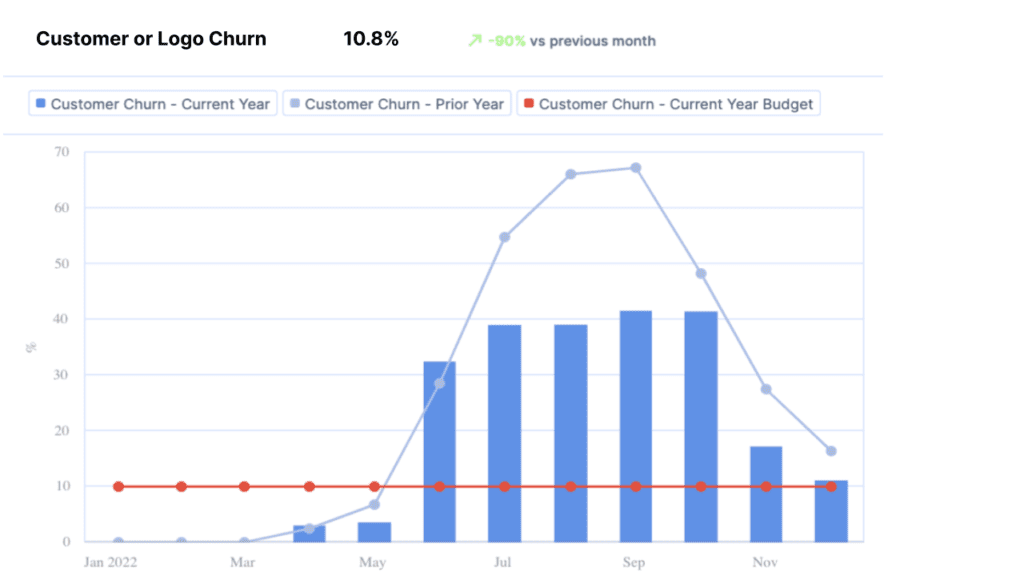Ready to transform data to insight?
Getting started with ScaleXP is easy! Try it for yourself with a 7 day free trial and get set up in minutes. Or, if you’d like to take a deeper dive, book a demo at a time that suits you.

Customer churn is the percentage of customers who stop doing business with a company over a certain period of time. It is an important metric for companies to track, as it can indicate the effectiveness of their products or services. Customer churn can also be called customer turnover.
The customer churn rate is the number of lost customers divided by the total number of customers at the beginning of the period, and then multiplied by 100 to express the result as a percentage.
For example, if a company had 100 customers at the beginning of the year, and 10 of those customers stopped doing business with the company during the year, the customer churn rate would be 10/100 * 100 = 10%.
Comparisons of customer churn rate are annual. If churn is calculated for a period of less than one year, it is generally annualised to express the rate as an annual one.
To annualise the rate, it is most accurate to convert the churn into a retention rate, then calculate to the power of the number of periods.
So for example, if 10% was the churn in a quarter, then the retention rate would be 90% per quarter, or 0.9 to the power of 4 = 0.656 per year. This is 66% retention per year meaning an annual churn rate of 34%.
A churned customer is a customer who has stopped doing business with a company. This can occur for a variety of reasons, such as dissatisfaction with the product or service, a change in circumstances, or the availability of a better alternative.
The measure of a churned customer is business specific. Some companies consider a customer churned when they end a subscription. Others may wait several months before classifying a customer as churned.
Customer churn is typically used to measure the stickiness of a product or service and to identify areas for improvement. A high churn rate can indicate that customers are not finding value in the product, or that they are experiencing problems with it, while a low churn rate can indicate that customers are happy with the product and are likely to continue using it.
There is no “good” or “bad” customer churn rate, as it can vary greatly depending on the industry and the specific business. However, a low churn rate is favorable.
Measuring churn consistently to ensure that it is stable or decreasing is important.
Customer churn is difficult to benchmark as definitions vary widely by company. Net Dollar Retention is a more typical measure of customer stickiness, which is widely benchmarked. See full details here.
This chart is an example of customer churn rate, with year on year comparisons, making it much easier to understand trends, improvements, even seasonality.

ScaleXP fully automates customer churn. Through integrations with both your accounting and CRM systems, as well as a smart set of text recognition algorithms, the system provides a full suite of SaaS metrics. Customers are automatically tagged as Active, New, Lost, Reactivated using your business definitions. Click here to learn more.

Measures growth in revenue from a group of customers. Typically split into upgrades, downgrades, renewals and losses.

Percentage of existing customers who remain customers after a given period.

Percentage of recurring revenue lost due to both cancellation and downgrades.
Getting started with ScaleXP is easy! Try it for yourself with a 7 day free trial and get set up in minutes. Or, if you’d like to take a deeper dive, book a demo at a time that suits you.
© 2024 ScaleXP | All Rights Reserved Company Number: 11447363
